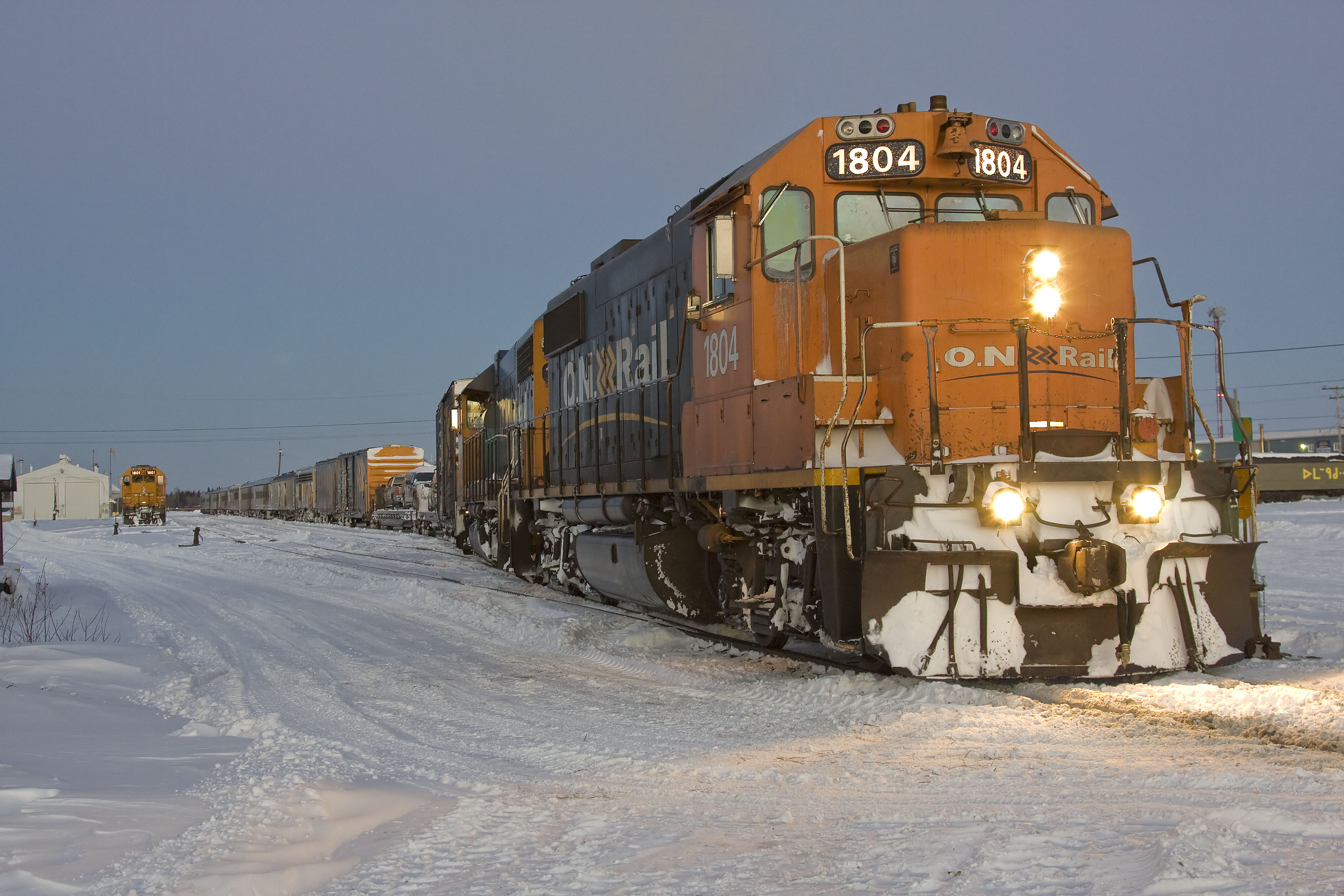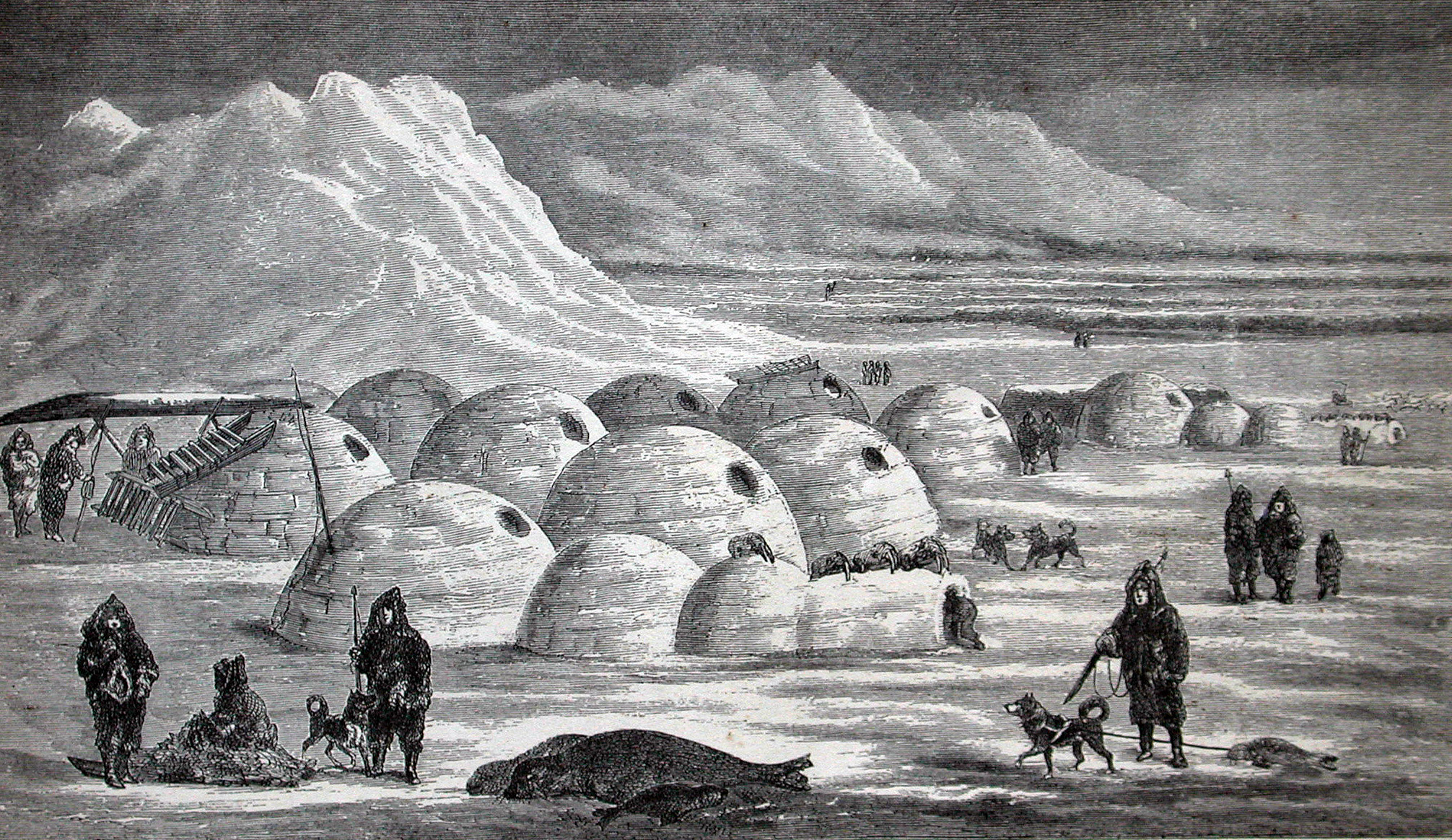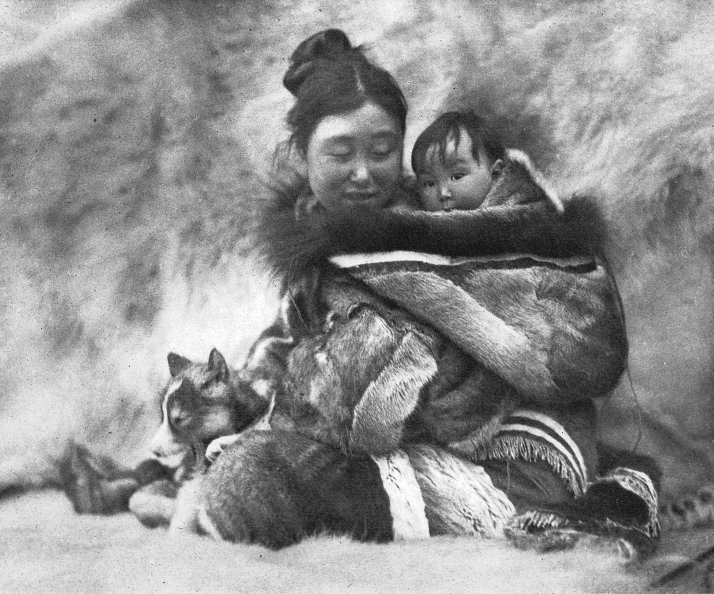|
Taamusi Qumaq
Taamusi Qumaq, (January 1, 1914 – July 13, 1993) was an Inuit historian, linguist, writer, politician and elder from Nunavik, Quebec, Canada, who contributed to the preservation of the Inuit language and traditional culture. Despite lacking any formal schooling, Qumaq published two seminal works on the Inuit culture: a 30,000-word comprehensive Inuktitut dictionary and an encyclopedia on Inuit traditional customs and knowledge. He was fluent in Inuktitut only. He understood Canadian and Quebec institutions and worked for their integration into Inuit lifestyle for the betterment of his community. He was a founding member of the first non-governmental co-op in the Canadian Arctic, in 1956 in Povungnituk. After contributing to the establishment of Rankin Inlet in the Northwest Territories, he returned to Povungnituk in 1960 and founded its first village council and acted as its chair from 1962 to 1968. From 1972 to 1977, he was a vocal opponent of the James Bay and Nort ... [...More Info...] [...Related Items...] OR: [Wikipedia] [Google] [Baidu] |
Brackets
A bracket is either of two tall fore- or back-facing punctuation marks commonly used to isolate a segment of text or data from its surroundings. Typically deployed in symmetric pairs, an individual bracket may be identified as a 'left' or 'right' bracket or, alternatively, an "opening bracket" or "closing bracket", respectively, depending on the Writing system#Directionality, directionality of the context. Specific forms of the mark include parentheses (also called "rounded brackets"), square brackets, curly brackets (also called 'braces'), and angle brackets (also called 'chevrons'), as well as various less common pairs of symbols. As well as signifying the overall class of punctuation, the word "bracket" is commonly used to refer to a specific form of bracket, which varies from region to region. In most English-speaking countries, an unqualified word "bracket" refers to the parenthesis (round bracket); in the United States, the square bracket. Glossary of mathematical sym ... [...More Info...] [...Related Items...] OR: [Wikipedia] [Google] [Baidu] |
Nord-du-Québec
Nord-du-Québec (; en, Northern Quebec) is the largest, but the least populous, of the seventeen administrative regions of Quebec, Canada. With nearly of land area, and very extensive lakes and rivers, it covers much of the Labrador Peninsula and about 55% of the total land surface area of Quebec, while containing a little more than 0.5% of the population. Before 1912, the northernmost part of this region was part of the Ungava District of the Northwest Territories, and until 1987 it was referred to as Nouveau-Québec, or ''New Quebec''. It is bordered by Hudson Bay and James Bay in the west, Hudson Strait and Ungava Bay in the north, Labrador in the northeast, and the administrative regions of Abitibi-Témiscamingue, Mauricie, Saguenay–Lac-Saint-Jean, and Côte-Nord in the south and southeast. The Nord-du-Québec region is part of the territory covered by the James Bay and Northern Quebec Agreement of 1975; other regions covered (in part) by this Agreement include Côt ... [...More Info...] [...Related Items...] OR: [Wikipedia] [Google] [Baidu] |
Akulivik
Akulivik ( iu, ᐊᑯᓕᕕᒃ) ( 2021 population 642) is an Inuit village in Nunavik, in northern Quebec, Canada. It is located on a peninsula that juts southwesterly into Hudson Bay across from Smith Island, Nunavut (Qikirtajuaq). Akulivik lies 1,850 km north of Montreal. Akulivik, meaning "central prong of a kakivak" in the Nunavik dialect of Inuktitut, takes its name from the surrounding geography. Located on a peninsula between two bays, the area evokes the shape of a kakivak, a traditional, trident-shaped spear used for fishing. Telephone and internet services are delivered by satellite. There is no hospital, but a clinic staffed by nurses provides non-critical care; otherwise air ambulances are available. Policing is done by the Kativik Regional Police Force. History Akulivik was incorporated as a community in 1976. The Inuit have lived in the area for thousands of years. In 1610, the explorer Henry Hudson passed by the island of Qikirtajuaq near present-day Akul ... [...More Info...] [...Related Items...] OR: [Wikipedia] [Google] [Baidu] |
Moose Factory
Moose Factory is a community in the Cochrane District, Ontario, Canada. It is located on Moose Factory Island, near the mouth of the Moose River, which is at the southern end of James Bay. It was the first English-speaking settlement in lands now making up Ontario and the second Hudson's Bay Company post to be set up in North America after Fort Rupert. On the mainland, across the Moose River, is the nearby community of Moosonee, which is accessible by water taxi in the summer, ice road in the winter, and chartered helicopter in the off-season (break-up or freeze-up). A private company also offers freighter-canoe ferry service across the Moose River. As of 2020, the MV Niska 1 ferry was operating between Moosonee and Moose Factory, carrying passengers and vehicles. The settlement is mainly inhabited by the Cree, but the hospital that provides healthcare services to the people of the island and surrounding area (collectively known as the Weeneebayko Area Health Authority) employs ... [...More Info...] [...Related Items...] OR: [Wikipedia] [Google] [Baidu] |
World War II
World War II or the Second World War, often abbreviated as WWII or WW2, was a world war that lasted from 1939 to 1945. It involved the vast majority of the world's countries—including all of the great powers—forming two opposing military alliances: the Allies and the Axis powers. World War II was a total war that directly involved more than 100 million personnel from more than 30 countries. The major participants in the war threw their entire economic, industrial, and scientific capabilities behind the war effort, blurring the distinction between civilian and military resources. Aircraft played a major role in the conflict, enabling the strategic bombing of population centres and deploying the only two nuclear weapons ever used in war. World War II was by far the deadliest conflict in human history; it resulted in 70 to 85 million fatalities, mostly among civilians. Tens of millions died due to genocides (including the Holocaust), starvation, ma ... [...More Info...] [...Related Items...] OR: [Wikipedia] [Google] [Baidu] |
Igloo
An igloo (Inuit languages: , Inuktitut syllabics (plural: )), also known as a snow house or snow hut, is a type of shelter built of suitable snow. Although igloos are often associated with all Inuit, they were traditionally used only by the people of Canada's Central Arctic and the Qaanaaq area of Greenland. Other Inuit tended to use snow to insulate their houses, which were constructed from whalebone and hides. Snow is used because the air pockets trapped in it make it an insulator. On the outside, temperatures may be as low as , but on the inside, the temperature may range from when warmed by body heat alone. Nomenclature The Inuit language word (plural ) can be used for a house or home built of any material, and is not restricted exclusively to snowhouses (called specifically , plural ), but includes traditional tents, sod houses, homes constructed of driftwood and modern buildings. Several dialects throughout the Canadian Arctic (Siglitun, Inuinnaqtun, Natsil ... [...More Info...] [...Related Items...] OR: [Wikipedia] [Google] [Baidu] |
Nanook Of The North
''Nanook of the North'' is a 1922 American silent film which combines elements of documentary and docudrama, at a time when the concept of separating films into documentary and drama did not yet exist. In the tradition of what would later be called salvage ethnography, the film follows the struggles of the Inuk man named Nanook and his family in the Canadian Arctic. It is written and directed by Robert J. Flaherty, who also served as cinematographer, editor, and producer. Some have criticized Flaherty for staging several sequences, but the film has been described by Roger Ebert as "stand ngalone" among Flaherty's films "in its stark regard for the courage and ingenuity of its heroes." It was the first feature-length documentary to achieve commercial success, proving the financial viability of the genre and inspiring many films to come. In 1989, ''Nanook of the North'' was among the first group of 25 films selected by the Library of Congress for preservation in the United Sta ... [...More Info...] [...Related Items...] OR: [Wikipedia] [Google] [Baidu] |
Europe
Europe is a large peninsula conventionally considered a continent in its own right because of its great physical size and the weight of its history and traditions. Europe is also considered a Continent#Subcontinents, subcontinent of Eurasia and it is located entirely in the Northern Hemisphere and mostly in the Eastern Hemisphere. Comprising the westernmost peninsulas of Eurasia, it shares the continental landmass of Afro-Eurasia with both Africa and Asia. It is bordered by the Arctic Ocean to the north, the Atlantic Ocean to the west, the Mediterranean Sea to the south and Asia to the east. Europe is commonly considered to be Boundaries between the continents of Earth#Asia and Europe, separated from Asia by the drainage divide, watershed of the Ural Mountains, the Ural (river), Ural River, the Caspian Sea, the Greater Caucasus, the Black Sea and the waterways of the Turkish Straits. "Europe" (pp. 68–69); "Asia" (pp. 90–91): "A commonly accepted division between Asia and E ... [...More Info...] [...Related Items...] OR: [Wikipedia] [Google] [Baidu] |
Kuujjuarapik
Kuujjuarapik (also spelled Kuujjuaraapik; iu, ᑰᔾᔪᐊᕌᐱᒃ ''little great river'') is the southernmost northern village (Inuit community) at the mouth of the Great Whale River (french: Grande Rivière de la Baleine) on the coast of Hudson Bay in Nunavik, Quebec, Canada. Almost 1000 people, mostly Cree, live in the adjacent village of Whapmagoostui. The community is only accessible by air, Kuujjuarapik Airport and, in late summer, by boat. The nearest Inuit village is Umiujaq, about north-northeast of Kuujjuarapik. The police services in Kuujjuaraapik are provided by the Nunavik Police Service, formerly the Kativik Regional Police Force. Like most other northern villages in Quebec, there is an Inuit reserved land of the same name, Kuujjuarapik. However, unlike most other Inuit reserved lands, the Inuit reserved land of Kuujjuarapik is not adjacent to its eponymous northern village; rather, it is located considerably farther north and in fact borders on the Inuit rese ... [...More Info...] [...Related Items...] OR: [Wikipedia] [Google] [Baidu] |
Dog Sled
A dog sled or dog sleigh is a sled pulled by one or more sled dogs used to travel over ice and through snow. Numerous types of sleds are used, depending on their function. They can be used for dog sled racing. Traditionally in Greenland and the eastern Canadian Arctic the Inuit had the dogs pull in a fan shape in front of the sled, while in other regions, such as Alaska and the western part of Northern Canada the dogs pull side by side in pairs. History Dog power has been used for hunting and travel for over a thousand years. As far back as the 10th century BCE these dogs have contributed to human culture. Assembling a dog sled team involves picking lead dogs, point dogs, swing dogs, and wheel dogs. The lead dog is crucial, so mushers take particular care of these dogs. Another important detail is to have powerful wheel dogs to pull the sled out from the snow. Point dogs (optional) are located behind the leader dogs, swing dogs between the point and wheel dogs, and team dogs a ... [...More Info...] [...Related Items...] OR: [Wikipedia] [Google] [Baidu] |
Nomadic
A nomad is a member of a community without fixed habitation who regularly moves to and from the same areas. Such groups include hunter-gatherers, pastoral nomads (owning livestock), tinkers and trader nomads. In the twentieth century, the population of nomadic pastoral tribes slowly decreased, reaching an estimated 30–40 million nomads in the world . Nomadic hunting and gathering—following seasonally available wild plants and game—is by far the oldest human subsistence method. Pastoralists raise herds of domesticated livestock, driving or accompanying them in patterns that normally avoid depleting pastures beyond their ability to recover. Nomadism is also a lifestyle adapted to infertile regions such as steppe, tundra, or ice and sand, where mobility is the most efficient strategy for exploiting scarce resources. For example, many groups living in the tundra are reindeer herders and are semi-nomadic, following forage for their animals. Sometimes also described as "nomad ... [...More Info...] [...Related Items...] OR: [Wikipedia] [Google] [Baidu] |
Taamusi
Taamusi (ᑖᒧᓯ), Tuumasi (ᑑᒪᓯ), Tomassie and Thomassie are Inuit Christian names originally given to Inuit baptised by missionaries in Kuujjuarapik. These names are used both as first names and surnames. It is derived from English, Thomas. Examples *Taamusi Qumaq (1914-1993), politician and writer *Tumasi Quissa Tumasi Quissa (born in 1948 at a camp near Akulivik, Quebec, Canada) is an Inuit singer-songwriter and a carver. Tumasi and his brother performed a few songs live on Canadian national television as part of 1981's Canada Day Canada Day (french: ... (1948-), singer and song-writer * Thomassie Mangiok (1983-), graphic designer References * {{given name Inuktitut-language names ... [...More Info...] [...Related Items...] OR: [Wikipedia] [Google] [Baidu] |






.jpg)
